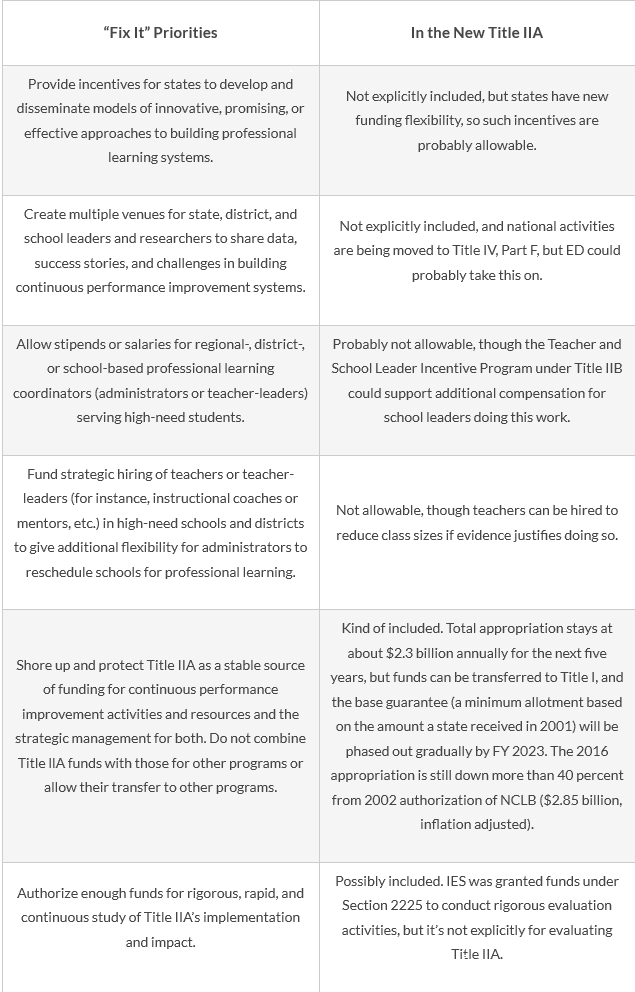The New Title IIA: Scrapped, Diluted, or Fixed?
As Congress was in the heat of reauthorizing the Elementary and Secondary Education Act last spring, I tried to bring context, evidence, and (I hope) insight to the debate with a policy brief called Title II, Part A: Don’t Scrap It, Don’t Dilute It, Fix It.
It called for concentrating Title IIA funds on creating and funding performance improvement systems for individuals, schools, and districts.
The old Title IIA allowed funds to be used on an eclectic set of strategies—professional development, recruiting male teachers, licensure reform, and tenure reform to merit pay, hiring teachers to reduce class size, and more. The focus, albeit hazy, was on improving individual teacher and principal quality, rather than improving whole schools’ and districts’ capacity for sustained performance improvement.
The new Title IIA is blurry, too. Apparently, Congress was not entirely persuaded by the arguments I spelled out. Here are Fix It’s recommendations versus what ended up in the law:

So, to hark back to the words of Don’t Scrap It, Don’t Dilute It, Fix It—the new Title IIA was not scrapped, not highly diluted, but not quite fixed.
On the plus side, the new title of Title IIA is “Supporting Effective Instruction,” an improvement over the previous “Teacher and Principal Training and Recruiting Fund.” Although we still have largely the same grab bag we had under NCLB (with some tweaks), the new name suggests recognition that the work at hand is to enhance teaching, not just teachers and principals.
And, though the list of allowable uses seemed to get longer—for instance, states can establish teacher and school leader preparation academies, further diluting a focus on continuous performance improvement—it’s heartening that Congress now allows districts to use Title IIA funds to audit their teacher and principal evaluation and support systems. Systematic evidence-based review may well enhance organizational learning and sustained improvement.
Another plus: Title IIA funds can now be used to improve—and report progress on—equitable access to effective teachers and leaders. With teacher shortages increasing in Oklahoma, Nevada, California, and across the country, ensuring equity requires states to accelerate that work, and Title II dollars can grease the wheels.
One vestige of the old Title IIA also deserves mention—a fair bit of flexibility for local educators to decide what they and their colleagues need to do to keep getting better at their jobs. Policymakers should seize this opportunity to build coherent professional learning systems so teachers and education leaders get high-quality professional development throughout their careers.
And speaking of professional development, Fix It also called for simplifying the definition of “professional development” to just 36 words. The old Title IIA’s definition took 551 words.
The new definition? 664.
Some things you can’t change.
Jane Coggshall is a principal researcher at AIR specializing in the intersections among research, policy, and practice of professional learning.